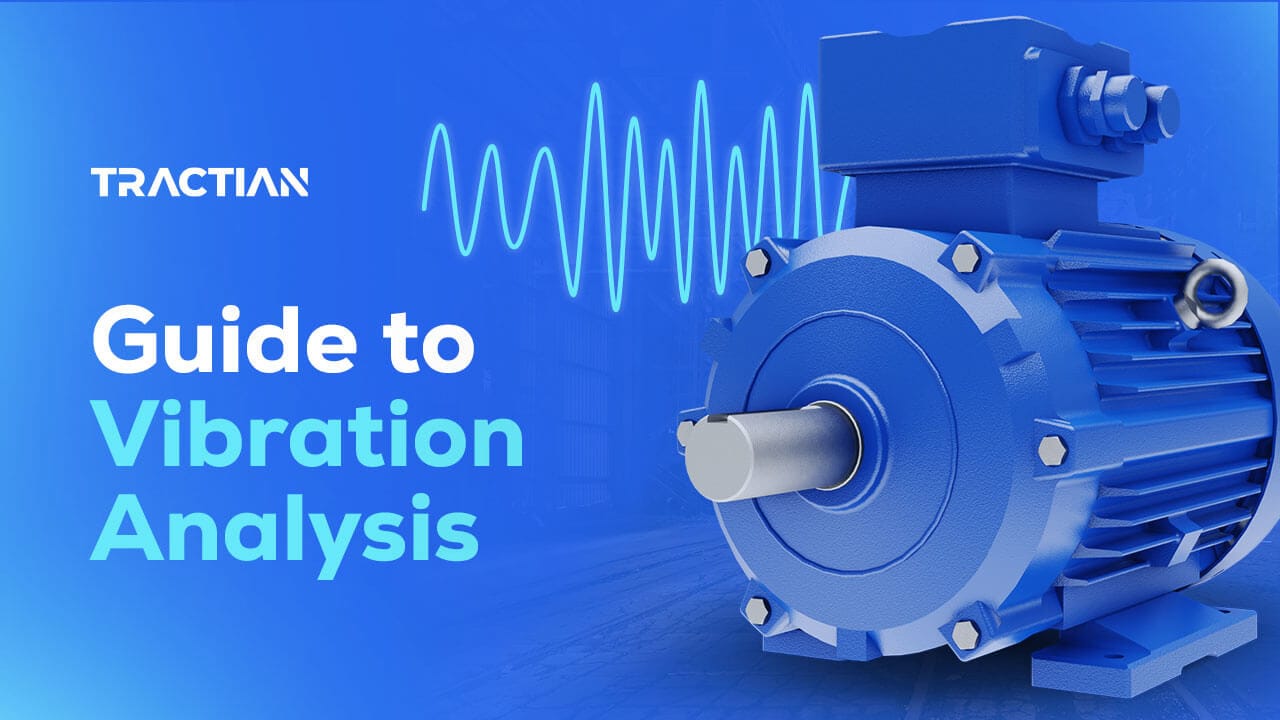Generally, it’s near impossible to avoid vibration in day-to-day life. In industrial equipment, this is even truer. Vibration often occurs because of contact between machine parts, unbalances, and misalignments, but there are many reasons a machine might vibrate – good and bad. This is where proactive maintenance strategies become important, especially vibration analysis.
Analyzing vibration is one of the first steps in preventing failures, which is the main goal of both proactive maintenance and condition monitoring. In order to do this, you have to understand machine conditions and collect data on their activity patterns.
What Is Machine Vibration Analysis?
Vibration analysis is the most accurate – and popular – type of condition monitoring in industrial equipment. It’s used to detect and analyze the variations in machine vibration. From this analysis we can determine the machine’s health, possible problems that may impair equipment performance, and identify which machines need proactive maintenance.
The information obtained from vibration data is fundamental to the concept of predictive maintenance. Why? Because vibration analysis assesses a machine’s condition and helps maintenance teams to avoid defects, unexpected failures, and unplanned downtime.
How Does Vibration Analysis Work?
To understand why there are so many advantages to using vibration analysis, we must first understand how it works.
All operating machines emit a certain vibration spectrum. These tell you about the health of the machine, if it’s in need of a check-up, and if there are any impending difficulties. When the vibration spectrum exceeds a certain limit, we can tell if the irregular vibration is directly related to a fault or failure.

The vibrations exerted during asset operation are characterized by two things: the wear of the equipment and the components that form them. Simply, this means that from the vibration spectrum we can analyze this wear and deterioration, ensuring the health and smooth operation of any machine. Below is an example, with “Motor X” being the asset analyzed.
MOTOR X
- Number of Poles: 4
- 60Hz rotation: 3600 RPM
- Gear A: 36 teeth / Gear B: 72 teeth
- Max temperature: 140 ºF

Once we start to analyze vibrations, we can identify patterns in the vibration diagrams. The goal of this in-depth analysis is to build a base graph, which will then help to identify variations that characterize possible problems in any equipment.

The graph above shows how changes in Motor X’s vibration patterns can be used to detect possible faults or failures. Not only is the trigger shown, but also the frequency and amplitude that caused the trigger.
How to Analyze Vibration Patterns
Now that we’ve seen how the analysis of the wave spectrum works, we need to understand how to obtain these spectrums. This is where vibration measurement comes in. There are 3 ways to measure vibration waves:
- Global level vibration meter without filter: These are instruments that can measure the global value of vibration over a wide frequency.
- Global level vibration meter with filter: This is identical to the previous one, but the measured level shows the vibration of the most important components to be monitored.
- Frequency analyzers: These are used in cases where the width of the filter is very narrow. Frequency analyzers can perform the Fourier Transform on a random, periodic or transient signal.

Once you’ve decided how you’d like to measure machine vibrations, you have to learn how to analyze a vibration spectrum. Here are some values and characteristics that are important to note when looking at a vibration spectrum and vibration levels:
- Vibration amplitude is the severity of vibration. It’s measured in G, which is the acceleration from gravity.
- The peak-to-peak value is the difference between the maximum positive and maximum negative amplitudes of a waveform.
- Peak value is the maximum value attained on a spectrum during a single cycle.
- The RMS value, or root mean square, is usually the most important value when doing vibration analysis. It’s directly related to how much energy the vibration profile contains, showing how destructive the vibration may be.
Benefits of Vibration Analysis
Vibration analysis and cost reduction go hand in hand. Once analysis has taken place, it’s easy to predict when maintenance is necessary. This gives maintenance teams the advantage to predict or avoid machine breakdowns, reducing costs and giving time back to the company.
When there’s less unplanned downtime, there’s more time to optimize maintenance routines and increase the lifetime of all assets. If an atypical vibration is treated before the predicted problem actually occurs, efficiency and profits are increased as a result.
It’s important to note that vibration analysis is a main method of analysis used in proactive maintenance strategies. It’s used to monitor asset health data in real time to avoid unexpected problems.
In an increasingly competitive market, it’s essential to invest in your teams’ proactive maintenance strategies. For more information on corrective, preventive, predictive, and proactive maintenance types, check out this blog.
Analyzing Acceleration, Speed and Displacement
When considering what to analyze, we can take into account that acceleration, speed, and displacement each encompass a range of frequencies.
The most common analysis measures the acceleration or speed, since these allow for the largest range of failures when compared to displacement. Speed is more suitable for analyzing the low and medium frequencies of the spectrum, while acceleration is more sensitive to higher frequencies.
One approach is to use the acceleration curve as a primary measurement to obtain both velocity and displacement. Using mathematical processes, such as numerical integration, makes it possible to apply different types of analysis with the correct use of filters and appropriate choice of resolution and sampling frequency.
How Is Vibration Analysis Implemented?
Vibration analysis is done with data collection equipment, either manually or automatically. Condition monitoring sensors are the most efficient and cost-effective option, and integrate machine learning and artificial intelligence to collect vibration data in real time.
Smart Trac is the TRACTIAN IoT condition monitoring sensor. It listens to each piece of equipment and evaluates them in real time, collecting data that can be utilized in predicting vibration changes that may cause future damage.
The sensors attach to equipment in less than 5 minutes and transmit information to our cloud-enabled platform. They transform vibrations into electrical signals, which are sent to vibration recording devices. The collected data will then be analyzed by a trained professional, with the help of artificial intelligence, to assess the health of the machine.
Besides collecting data, the condition monitoring platform also interprets it, sends insights about potential failures before they happen, and provides comprehensive routes of action for maintenance teams. The analysis is available in real time on computers, tablets, and smartphones.
TRACTIAN fault detection technology has been granted a patent by the world’s leading patenting institution, the USPTO. Not only does our technology detect issues and alert maintenance teams when something changes, but it also goes a step further – it offers specific diagnoses for machine failure modes, and gives managers solutions for these issues. To learn more about the patent and our technology click here.
We understand that investment in vibration analysis is extremely important. Proactive maintenance strategies not only help maintenance teams anticipate unexpected downtime, but also to avoid losses and the need for equipment replacement from that downtime.
To learn more about how proactive maintenance strategies like TRACTIAN condition monitoring can benefit your maintenance teams, schedule a free demonstration and talk to one of our specialists.


